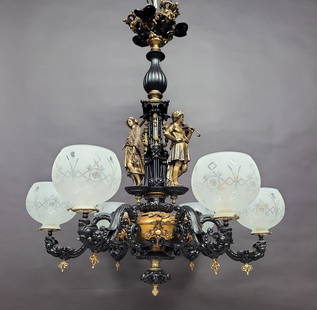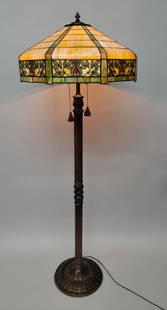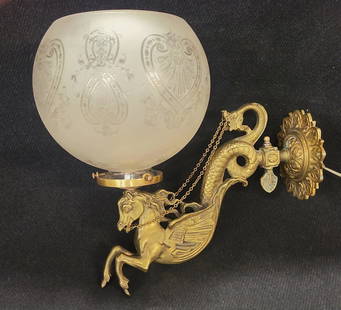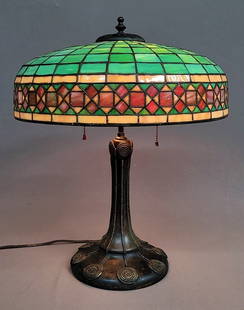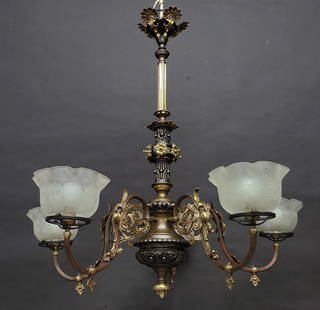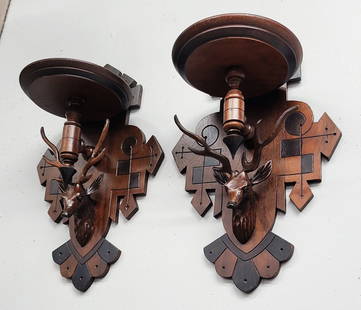
Russian school, 18th century. "Odighidria". Tempera
Similar Sale History
View More Items in Lighting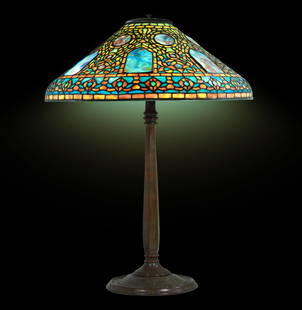
Related Lighting
More Items in Lighting
View MoreRecommended Home & Décor
View More








Item Details
Description
Russian school, 18th century."Odighidria".Tempera on panel. Oklad of silver, gilded silver, enamels and pearls of the Volga, ca. 1877.Measurements: 32 x 27.5 cm.The present icon lies on the margin between sacred art and the decorative arts. This half-length Mother of God, with her head slightly bent, holding the Child Jesus in her left arm, pointing to him with her right arm, is called Odighitria. The term "Odighitria", translated from Greek, means "she who shows the way".It is one of the most recurrent representations of the Mother of God and Jesus in Orthodox iconography. With the indicative gesture, the Virgin tells the viewer that the Truth is behind the Child Jesus, and all those who will follow Him. Although it is not seen behind the oklad, but in the traditional iconography the Child holds in his right hand the Gospel of St. John, where the phrase "I am the way, the truth and the life" is mentioned. The Christ Child's right hand is raised in gesture of blessing.However, the real interest of this lot lies precisely in the decorated silver plate, named after the Russian word "oklad". The tradition of decorating icons with oklad appeared after the mandate of the Holy Ruling Synod of 1722, when it was forbidden to hang metal crosses on icons and to leave offerings in the form of coins, as this tradition had pagan roots.This applied decoration is found almost everywhere in the world, but is most widespread in Central and Eastern Europe. And in the Orthodox tradition, the manufacture of these items became a separate type of art and craft: many travellers noted with admiration in their diaries the luxury of Ukrainian and Russian shrines. The material for the specialised craftsmen was precious metals, brass, copper and even tin. The wrought-iron base was completed with semi-precious stones, reliefs, engravings, enamels, filigree, stained glass and enamels. The back was lined with soft red or purple velvet, as in the lot of interest, or covered with wax. There were also embroidered oklad, in which the sturdy fabric was adorned with pearls and beads.Oklads have not only an aesthetic purpose, but also a practical one. Icons painted on wood suffer from candle soot, humidity, temperature fluctuations and are constantly touched by parishioners. The paint also darkens, fades, cracks, crazes and rubs off. The oklad or "curling", another term used, protects the icons from damaging effects, prolonging their lifespan.As with icon painting, the materials used in making a decorative oklad have their own particular symbolism, which can tell a lot about the icon hidden underneath. For example, in the case of the auctioned icon, the main material, silver, symbolises purity and virtue, deliverance from sins and salvation of the soul. The pearls are the attribute proper to the Virgin Mary, symbolising her meekness, purity and perfection. Finally, the enamel represents the Christian virtues, such as humility, kindness, and love of neighbour.
Buyer's Premium
- 23%
Russian school, 18th century. "Odighidria". Tempera
Estimate €6,000 - €7,000
8 bidders are watching this item.
Shipping & Pickup Options
Item located in Barcelona, barcelona, esOffers In-House Shipping
Payment

TOP




































